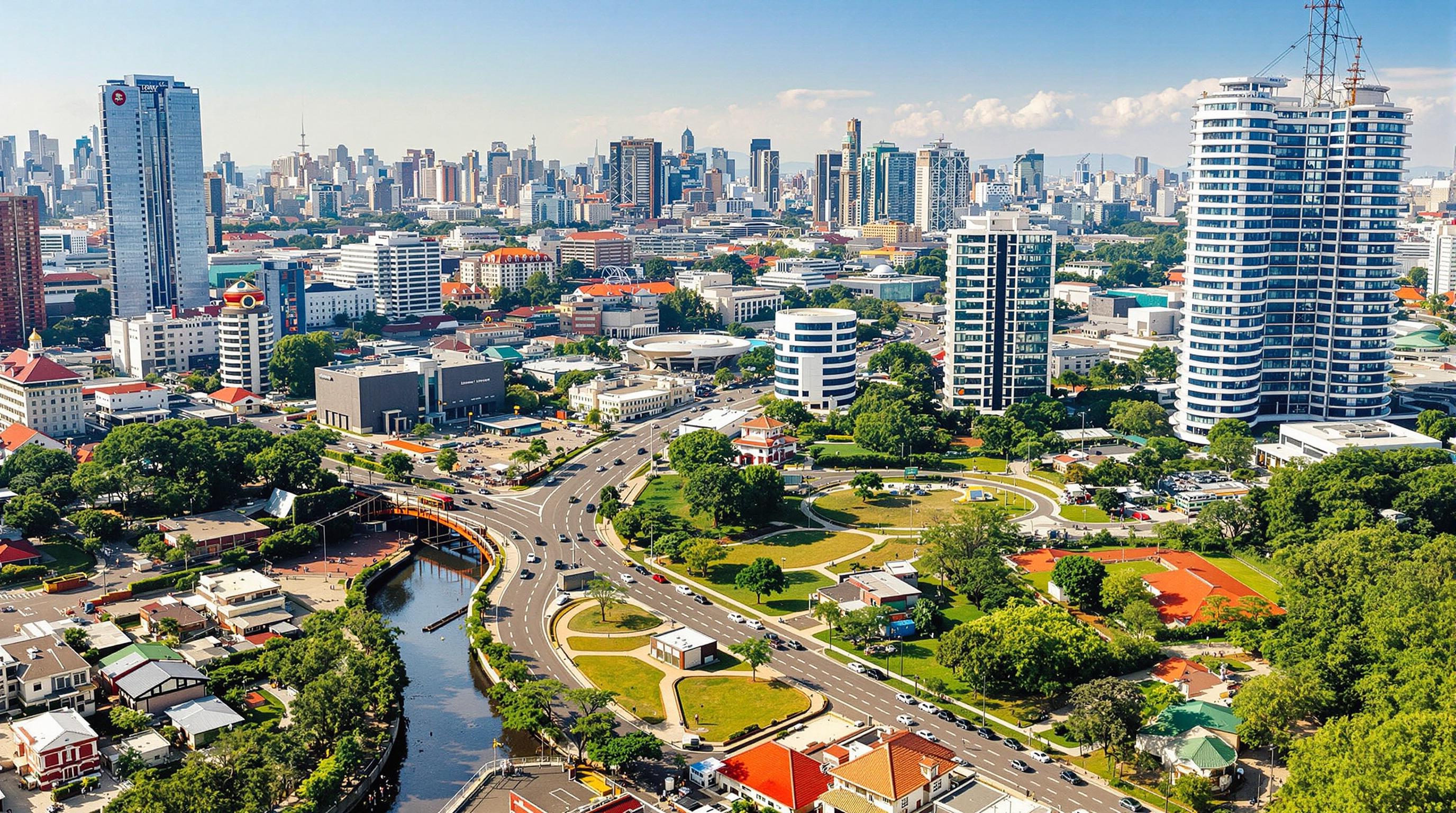Related Articles
- Harnessing Nostalgia: How Memory Mapping Can Inspire Innovative Urban Infrastructure Solutions
- Revealing the Invisible: How Urban Legends Influence Public Perception of Infrastructure Projects
- Whimsical Structures: How Playgrounds Can Inspire Innovative Approaches to Urban Infrastructure Development
- The Enigmatic Impact of Dark Fiber Networks on the Future of Digital Ecosystems and Their Capacity to Scale
- Beyond the Horizon: Exploring the Impact of Cultural Nuances on Global Digital Infrastructure Expansion
- Whispers of the Future: How AI-Driven Edge Computing Redefines Network Resilience and Flexibility
12 Unexpected Chronicles: Tapping into Local Anomalies to Revolutionize Infrastructure Management Dynamics
12 Unexpected Chronicles: Tapping into Local Anomalies to Revolutionize Infrastructure Management Dynamics
12 Unexpected Chronicles: Tapping into Local Anomalies to Revolutionize Infrastructure Management Dynamics
Introduction to Local Anomalies
Infrastructure management has long relied on standardized practices and protocols. However, the advent of local anomalies—unexpected events or phenomena that deviate from the norm—has opened new pathways for innovative infrastructure solutions. Recognizing these anomalies can lead to more agile, responsive management strategies.
Local anomalies, whether they manifest in environmental, cultural, or socioeconomic dimensions, can serve as valuable data points. By embracing these unexpected elements, infrastructure managers can better understand the complexities of their environments and make decisions that are more aligned with the local context.
This article aims to explore 12 intriguing case studies where local anomalies have been identified and effectively leveraged to transform infrastructure management dynamics in profound ways.
1. The Sinking City of Venice
Venice, known for its intricate canals and unique architecture, faces the dual challenges of increased tourism and rising sea levels. Surprisingly, the city’s intricate system of waterways can be a crucial asset for infrastructure management if utilized correctly. By analyzing the ebb and flow of tidal patterns, city managers can more accurately predict the needs for flood defenses.
Local anomalies in Venice’s tide patterns have spurred innovative engineering projects, such as the MOSE project, which aims to create a series of barriers to protect the city from flooding. This ambitious initiative exemplifies how ancient cities can adapt modern technology to safeguard their future while preserving heritage.
Engaging local communities in decision-making has helped Venice tap into the wisdom of those who live with the water daily. By intertwining local input with technological advancements, Venice illustrates the potential of anomaly-based strategies in heritage conservation and infrastructure resilience.
2. The Heat Island Effect in Urban Areas
Urban areas often experience a phenomenon known as the "urban heat island" effect, where temperatures exceed those of surrounding rural areas. This anomaly can significantly influence energy consumption and public health. By acknowledging the heat island effect, city planners can devise targeted strategies to improve cooling and reduce energy costs.
For instance, cities like New York have implemented green roofs and urban forestry programs as part of their infrastructure management. These initiatives harness the potential of local anomalies in temperature variations to foster cooler urban environments and enhance livability.
The multifaceted impacts of these programs resonate with residents' desires for improved air quality and biodiversity. By addressing the urban heat island effect, cities can make strides towards more sustainable urban infrastructure while also tackling climate change-related challenges.
3. The Influence of Local Flora on Infrastructure
Unexpectedly, local plant life can significantly impact infrastructure management. In regions prone to heavy rainfall, for instance, certain plants can act as natural barriers against erosion. Harnessing the anomaly of vegetation patterns in these areas can lead to the development of more resilient infrastructures.
By integrating local flora into drainage and flood management systems, cities can reduce costs and enhance their ecological standing. This approach has been notably successful in cities like Portland, Oregon, where the effects of riverine health are maximized by incorporating native plants into urban planning.
Not only does this strategy provide a protective layer against flooding, but it also fosters community engagement by connecting residents with their local environment. Sustainable practices inspired by local anomalies create an atmosphere that celebrates nature within urban spaces.
4. The Impact of Local Economic Fluctuations
Economic anomalies, such as unexpected surges or declines in local employment rates, can significantly influence infrastructure needs. Understanding these fluctuations allows infrastructure managers to prioritize development projects. In cities facing economic boom, the demand for enhanced transportation or housing may arise urgently.
Conversely, as economies falter, infrastructures must adapt to shrinking populations and diminishing resources. Cities like Detroit have navigated this terrain by reinventing their infrastructure strategies to reflect economic realities, emphasizing community building and revitalization projects.
By embracing these economic anomalies, urban planners can proactively address infrastructure needs, leading to initiatives that not only respond to current demands but also anticipate future changes. This adaptability is key to cultivating sustainable urban environments.
5. Geological Anomalies and Infrastructure Projects
Geological anomalies, such as sinkholes or unstable soil, often pose challenges to infrastructure development. However, they also present opportunities for innovation. Engineers and geologists working in areas with these anomalies have begun to embrace the unexpected by developing more resilient and adaptive construction methods.
For example, in areas plagued with sinkholes, innovative building techniques have emerged that utilize reinforced materials and flexible designs. Florida, with its unique karst landscape, has seen the development of safer infrastructure in reaction to geological challenges.
These adaptive strategies showcase how infrastructure management can pivot from merely addressing issues to leveraging local geological characteristics, ultimately guiding more sustainable and resilient practices in construction.
6. The Role of Local Climate Patterns
Local climate anomalies greatly affect infrastructure planning and resource management. Patterns of rainfall, temperature variations, and extreme weather events can dramatically reshape requirements for transportation and utilities. Managers who understand these localized climate shifts can better allocate resources and anticipate needs.
Regions experiencing increased rainfall may need to invest in enhanced drainage systems, while areas with prolonged droughts may shift focus towards water conservation technologies. Infrastructure adaptations that reflect these climatic anomalies can help communities better withstand future environmental changes.
For instance, cities like Los Angeles have initiated water recycling programs in response to consistent drought patterns, leading to a more sustainable approach to water management. Recognizing and harnessing local climate anomalies is thus integral to successful infrastructure management.
7. Unconventional Traffic Patterns
Traffic patterns can often reveal peculiar local anomalies, such as unexpected congestion during off-peak hours. By utilizing data analytics, cities can identify these anomalous behaviors and implement more effective traffic management strategies. This has become increasingly important as urban populations grow.
For instance, cities like Barcelona have turned to smart traffic systems that respond in real-time to changing conditions, optimizing traffic flow and reducing congestion. This technology enables a proactive approach to managing infrastructure challenges that arise unexpectedly.
These adaptive traffic management systems not only improve vehicular flow but also enhance pedestrian safety and reduce emissions. Such strategies reflect a thoughtful engagement with local anomalies that lead to more adaptive, dynamic urban environments.
8. Social Anomalies in Community Engagement
Community engagement levels can sometimes display unexpected anomalies, often based on social dynamics, demographics, or cultural contexts. Recognizing and leveraging these anomalies can significantly benefit infrastructure management, as stronger community buy-in leads to more sustainable outcomes.
For example, cities that identify and engage underrepresented communities in infrastructure decisions often witness enhanced project success rates. By tapping into local knowledge, urban planners can create initiatives that truly resonate with community needs.
Such approach has reshaped infrastructure development in cities like Chicago, where inclusive practices have led to revitalization efforts that not only reflect the voices of local residents but also ensure long-term sustainability and harmony in urban planning.
9. The Unexpected Benefits of Urban Wildlife
Urban wildlife often presents anomalies in the form of species that thrive in city environments, reshaping how we think about urban planning. By identifying and harnessing the presence of wildlife, cities can explore greener infrastructure solutions that promote biodiversity alongside urban living.
For example, cities such as Sydney have integrated wildlife corridors into their urban infrastructure, allowing animals to traverse urban spaces safely. Recognizing the role of synanthropic species in urban ecosystems can guide infrastructure managers in creating spaces that accommodate both humans and nature.
By considering urban wildlife not as an obstacle but as a valuable part of urban ecology, infrastructure projects can ultimately enhance community resilience and ecological health, leading to more harmonious urban environments.
10. Conclusion: The Future of Infrastructure Management
Tapping into local anomalies allows a profound shift in infrastructure management practices, offering fresh perspectives that can radically improve urban living. By identifying unique local conditions—whether geological, climatic, or social—cities can form more adaptable, responsive infrastructure solutions.
The cases highlighted across this article provide a framework for contemporary urban planners. They demonstrate that embracing the unexpected can yield not only enhanced resilience but also foster stronger community ties and environmental sustainability.
Emphasizing the value of local anomalies in infrastructure management, future cities can evolve into aesthetically pleasing, functional, and sustainable spaces that reflect the diverse needs of their inhabitants.




